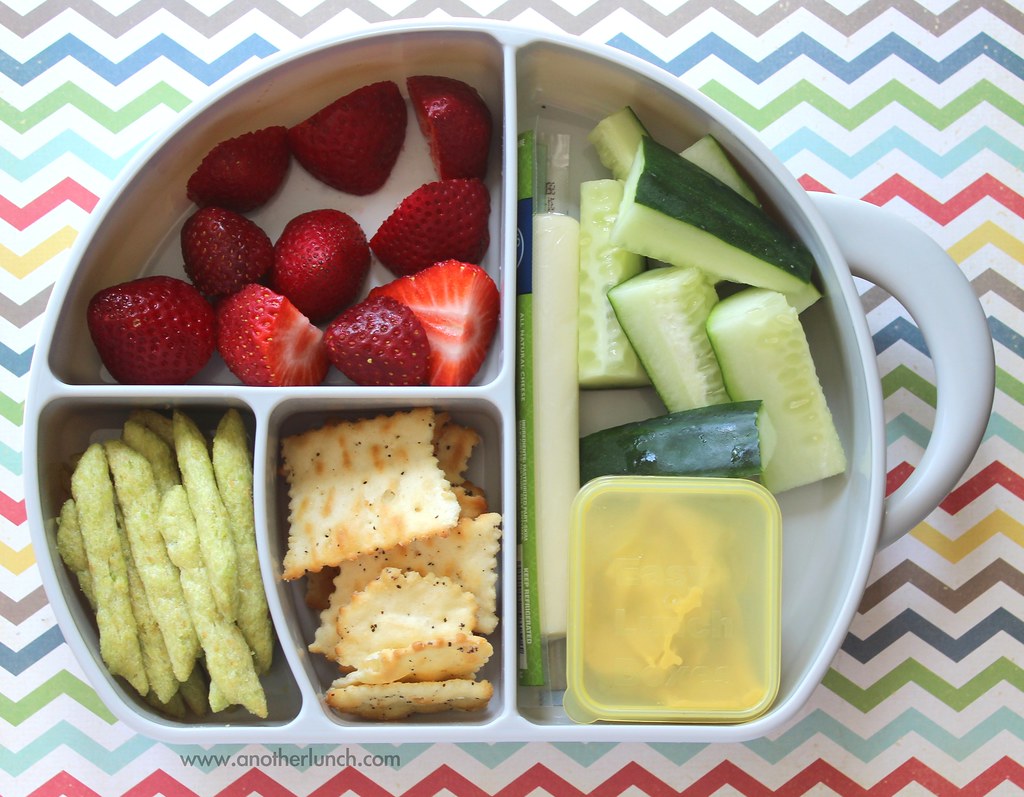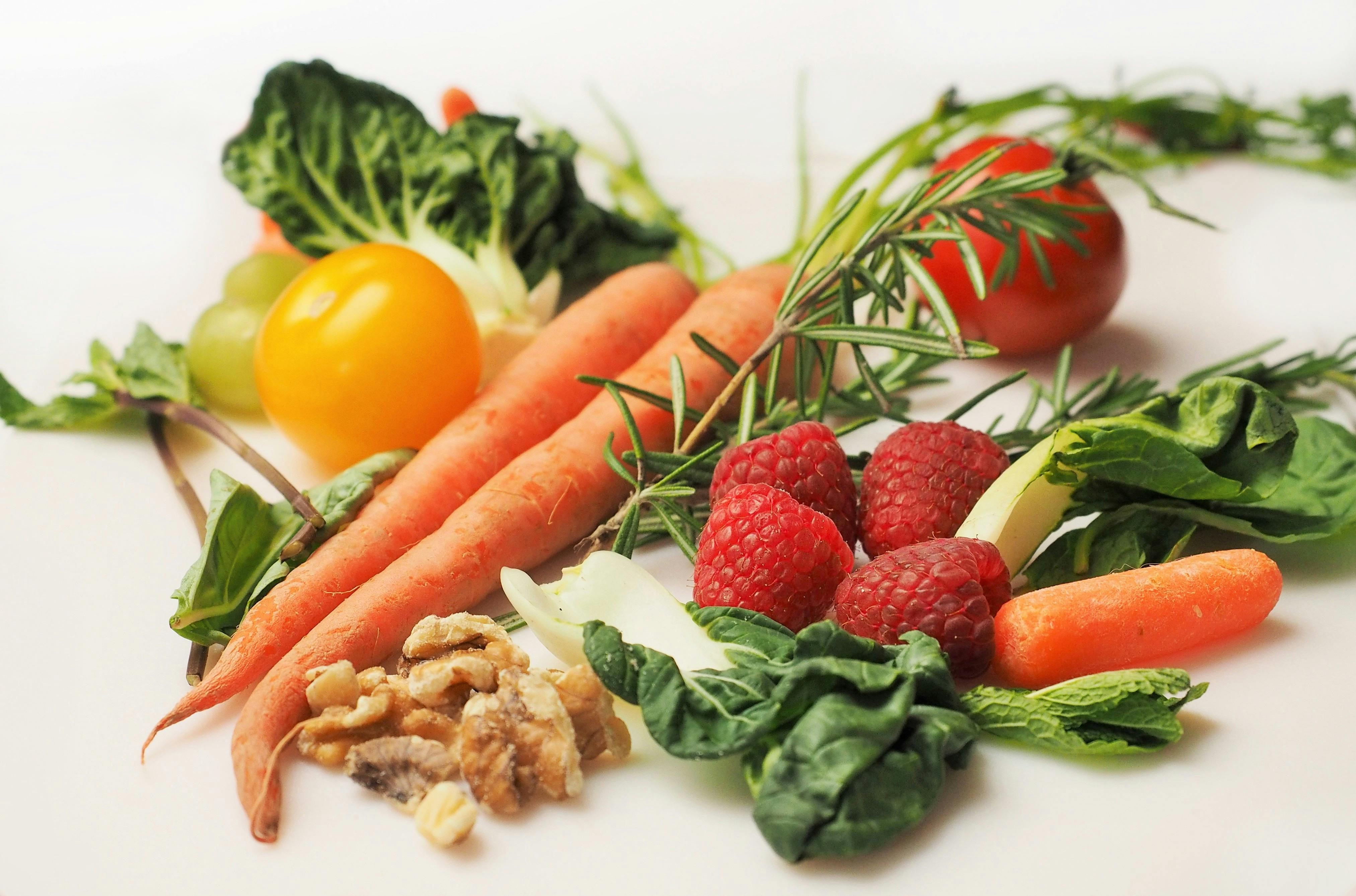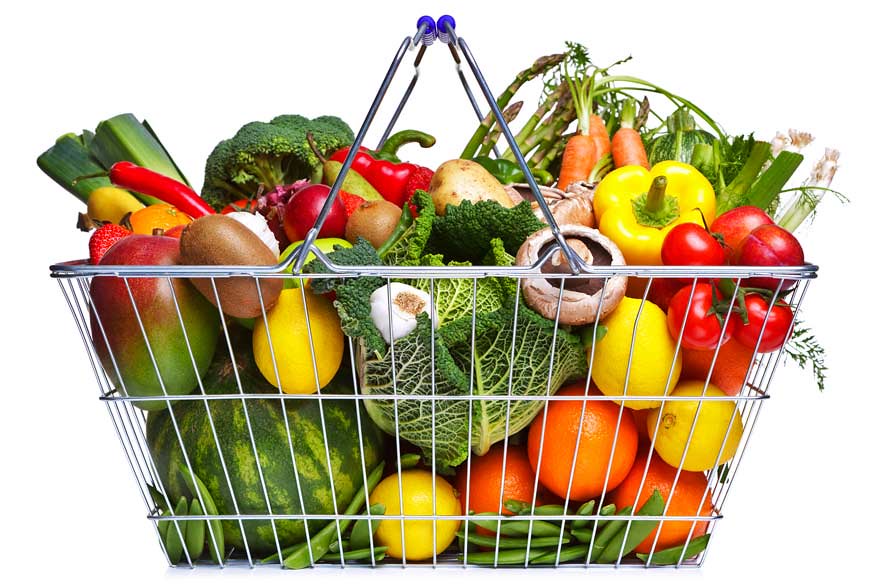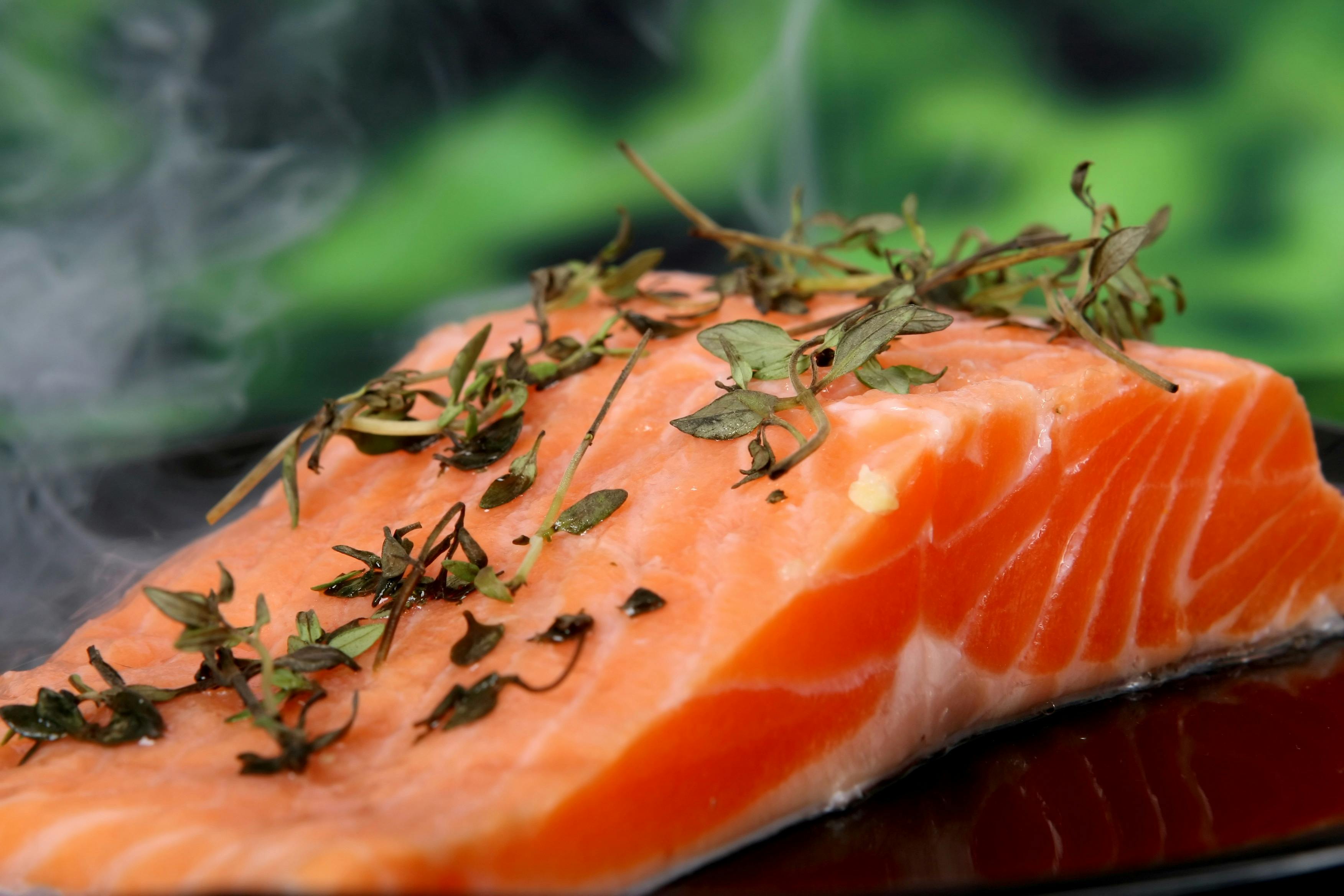 |
| Image Courtesy of Melissa on Flickr |
If you or someone you love has COPD, you might be concerned about diet and nutrition. What kinds of foods should you eat to stay healthy, and what should you avoid?
Eating right and sticking to a healthy diet is one of the best things anyone can do to feel good and keep their body healthy, with or without a chronic disease. In reality, however, eating well is difficult to do on a daily basis.
Even though just about everybody knows how important good nutrition is, many people still don't practice a healthy diet. This is sometimes due to a lack of time and motivation, but can also be a result of simply not knowing what kinds of foods are actually good for you and not.
If you have COPD, it's especially important to understand what a proper diet looks like and how to incorporate healthy foods into your everyday life. That's why, in this post, we're going to tell you about a wide variety of healthy foods you can eat to help you feel better and stay healthy with COPD.
Why a Nutritious Diet is Important for COPD
 |
| Image courtesy of FoodFacts on Flickr |
Living with a disease like COPD can make everyday tasks like eating more complicated. Many people with COPD even have to eat special, high-calorie diets to make up for the strain that the disease puts on their bodies.
COPD forces you to pay extra attention to many aspects of your health, including diet and nutrition. If you don't get all the vitamins and nutrients you need, you can experience increased COPD symptoms and accelerate how quickly your disease gets worse.
When you are struggling to manage a chronic disease like COPD, it's important to make every meal count by choosing foods that are wholesome and nutrient-dense. Eating healthy meals full of lots of fruits, veggies, whole grains, and healthy fats is key for maintaining a healthy weight and keeping your body strong.
You should also know that that what's not in certain foods is sometimes just as important as what is. Unhealthy foods with empty calories don't do you any good, and in the worst cases can contribute to weight gain, heart disease, and other health problems. That's why you should avoid processed foods and anything packed with sugar, simple carbs, and unhealthy fats.
Even among foods considered “healthy,” some are better than others at supplying your body with the nutrients it needs. There are many fruits, veggies, meats, and dairy products that are particularly rich in important vitamins, minerals, fatty acids, and other things your body needs to stay healthy with COPD.
It's much easier to make healthy decisions when you know what's good for you and have a lot of options to choose from. That's why we're providing you with the following list of 21 healthy foods for COPD to help you get started.
While you don't have to get every single item on this list, you should still eat a varied diet of healthy foods from different fruit, vegetable, dairy, and grain categories. This list will introduce you to the nutrient content and health benefits of a wide variety of foods so you can better understand how to meet all your nutritional needs.
How the Food You Eat Affects Your COPD

Before we get to the list, there are a few special factors you should take into consideration when planning a healthy diet for COPD. Certain foods, large meals, and weight gain can actually make your symptoms worse, so you have to pay extra special attention to what you eat.
{{cta('fa8abc2a-1e88-4fa3-82fd-1cb5b9ed43b2','justifycenter')}}
Inflammation
First of all, people with COPD should avoid eating foods that are known to cause inflammation. That's because inflammation puts strain on your body and takes energy away from your lungs, where it's most needed.
Foods that can cause inflammation include high-sugar foods like soda and sweets as well as processed meats like sausage. Besides being inflammatory, these foods are hard on your body and don't contain the nutrients your body needs to effectively manage your COPD.
Instead, you should eat healthy produce like leafy greens and fruits and veggies with lots of vitamin C and vitamin A. This helps your body get the nutrients it needs to prevent and manage inflammation and can improve how well your lungs function.
Manage Weight Gain and Weight Loss

Maintaining a healthy weight is also a top health priority if you have COPD. Both being underweight or being overweight can hurt your lung function and make it more difficult to breathe.
If you are underweight, you're likely to have worsened symptoms like weakness, fatigue, and shortness of breath. Weight loss and malnutrition can also weaken your immune system, break down your muscles, and increase your chances for infection, exacerbations, and death.
Excess weight is particularly dangerous for people with COPD, because it can quickly start a downward spiral of physical decline. Being overweight makes it more difficult to stay active, puts extra weight and strain on your chest that makes it difficult to breathe, and also increases the amount of oxygen your body needs to function.
Pay Attention to Antioxidants

Research shows that people who have COPD experienced increased oxidative stress in their lungs and elsewhere in their bodies. This means that they have an excess of inflammatory compounds, called oxidants, that can cause irritation, tissue damage, and other complications.
Every person's body produces antioxidants, which are molecules that neutralize oxidants and prevent them from doing harm. Most healthy people are able to produce enough anti-oxidants to keep the oxidants in check, but people with COPD often don't.
Research shows that people with COPD have an excess amount of oxidants that throws off their body's delicate oxidant/antioxidant balance. When this happens and the balance tips in favor of oxidants, it causes oxidative stress.
That's why some doctors recommend that people with COPD counteract their elevated oxidant levels by increasing their dietary antioxidant intake. There are many fruits, vegetables, and other foods that are rich in antioxidants, and it's thought that eating more of these foods can help your body restore a proper oxidant/antioxidant balance.
Some of the most common antioxidants include vitamin C, vitamin E, beta-carotene, selenium, and manganese, which are abundant in a variety of fruits and vegetables. However, research on antioxidants in foods is still ongoing, and researchers don't yet know if eating antioxidant-rich foods is a reliable way to combat oxidative stress.
Eat Fewer Carbohydrates

If you have COPD, you should avoid simple carbohydrates at all costs. Not only are simple carbs empty calories, but having too many carbohydrates in your diet can actually make your COPD symptoms worse.
To understand how carbohydrates affect COPD, you have to first understand how your lungs process carbon dioxide. Carbon dioxide is a waste product that is made from all kinds of metabolic processes in your body, including when you digest food.
When foods are broken down, the carbon waste products go into your blood and are carried to your lungs. When you breathe, the carbon waste is expelled from your body via carbon dioxide in your breath when you exhale.
Carbohydrates, in particular, tend to produce a lot of carbon waste compared to other nutrients, like fat and protein. This means that carbs increase the burden on your lungs to expel the carbon dioxide waste. which can lead to increased COPD symptoms like breathlessness and wheezing.
This is why most doctors recommend that people with COPD eat a diet that's high in fats and low in carbohydrates. This reduces strain on the lungs, reduce COPD symptoms, and make it easier to breathe and exercise.
Eat Small Meals

Doctors often recommend that people with COPD forego traditional mealtimes and instead eat 4-5 smaller meals spaced throughout the day. That's because, when you eat larger meals, it can put pressure on your lungs and diaphragm and make it more difficult to breathe.
Smaller meals are easier to digest and are less likely to cause bloating, indigestion, and breathing discomfort. It also helps you control your portion sizes and eat a wide variety of healthy foods every day.
Eat Nutritious, High-Calorie Foods

Many people with COPD have to eat extra calories every day to make up for the extra energy that their respiratory muscles use to breathe. If your doctor puts you on a high-calorie diet, it's important to fill in those extra calories with healthy, nutrient-packed foods.
Many of the highest-calorie foods are also the least nutritious; think of ice cream, soda, potato chips, and other processed snacks, for example. Instead of eating junk foods with empty calories, choose nutrient-dense, high-calorie foods like nuts and dairy. That way you can get enough calories and maintain a healthy weight while also limiting the amount of salt, sugar, and simple carbs in your diet.
A Final Consideration: Talk to Your Doctor
Depending on your unique physiology and the severity of your disease, you might have special dietary needs and restrictions. That's why, as one final consideration before we get to the list of healthy foods you should eat for COPD, we want to emphasize the importance of talking to you doctor about diet and nutrition.
Your regular doctor or a dietitian can often give you valuable, individualized advice that you can't get anywhere else. They can also help you put together a personalized nutrition plan to help set you on the right track.
As long as you don't have special dietary restrictions, you can use all the foods on this list to make a wide variety of healthy meals. So, without further delay, here's 21 healthy foods you can eat as part of a healthy diet for COPD.
21 Healthy Foods You Can Eat to Stay Healthy with COPD

Foods Packed with Healthy Carbohydrates
Research shows that, when you have COPD, eating too many carbohydrates increases the strain on your respiratory system and makes it more difficult to breathe. While a certain amount of carbohydrates are necessary for a balanced diet, you should eat them in moderation and choose whole foods packed with complex carbohydrates like whole grains and wheat pastas.
Researchers recommend that people with COPD get about 25% of their calories from carbohydrates.
Ancient Grains (Including Quinoa, Barley, and Buckwheat)

Quinoa, buckwheat, and barley, are among a group of whole grains often known as “ancient grains.” Ancient grains are different from modern grains in the sense that they have changed very little over the past several hundreds of years.
Ancient whole-grains are especially rich in fiber, protein, and vitamins, and also tend to be more calorie-dense than modern whole grains. For example, one cup of spelt has about 7.5 grams of fiber and 10.7 grams of protein, while a cup of brown rice only has about 3.5 grams of fiber and 5 grams of protein.
Quinoa, black rice, and other ancient grains are easy to prepare and great for digestion. They also contain high amounts of magnesium, which is extremely important for lung function and may even help prevent COPD exacerbations.
What's more, quinoa and buckwheat are naturally gluten-free, which makes them a great option for people with Celiac disease or other gluten intolerances. If you're looking to add healthy carbohydrates to your diet, the ancient grains are a great place to start.
Here are some examples of healthy ancient grains:
- Quinoa
- Millet
- Black BarleyBlack Rice
- Spelt
- Teff
Whole-Grain Breads and Pastas

Whole grains like wheat breads and wheat pastas are an important part of any healthy diet, but they can be particularly important for people with COPD. A diet rich in whole grain foods can reduce inflammation, improve digestion, help you maintain a healthy weight, and even reduce your risk of heart disease and diabetes.
Breads, rolls, crackers, tortillas, and pastas can all be healthy sources of carbohydrates when eaten in moderation. However, you should always opt for nutritious, whole-grain versions of these foods instead of the less-healthy, processed white grains.
White breads and pastas have been stripped of much of their nutritional value and are full of simple carbohydrates that can raise your blood sugar and leave you feeling less satisfied after meals. Whole-grain carbohydrates, on the other hand, fill you up and provide energy for much longer because they take more time to digest.
Oats

Photo by: Favorece
Like other whole grains, oats are a great source of healthy carbohydrates and fiber for people with COPD. A diet that includes regular helpings of oats can reduce your risk for cardiovascular disease, cancer, and type 2 diabetes.
One of the best things about oats is their high amounts of soluble fiber, which is known to lower cholesterol and prevent heart disease. It also contains a lot of short-chain fatty acids, which improve digestion and are known to have potent anti-cancer and anti-inflammatory properties.
Foods Packed with Healthy Fats
Healthy fats are perhaps the most important nutrients you should seek out if you have COPD. Most doctors recommend eating a low-carb, high-fat diet because it can improve COPD symptoms and reduce the amount of strain that eating puts on your respiratory system.
A high-fat diet allows your body to get the extra sustenance it needs to breathe without upsetting your nutrient balance. However, it's till important to watch your fat intake so it doesn't become excessive, especially if you are at risk for heart disease.
Most doctors recommend that people with COPD get about 55% of their calories from fat.
Vegetable Oils

While it's important to eat a lot of healthy fats when you have COPD, it's just as important to choose the right kinds. You should try to use unsaturated fats, like vegetable oils, which are considered much healthier than saturated animal fats like butter and lard.
Plant-based fats like olive oil and vegetable oil have been associated with a variety of health benefits, including lowered cholesterol and a reduced risk for heart disease and type 2 diabetes. When cooking on the stove or adding any fats to your meals, try to use plant-based, unsaturated fats as much as possible.
But how do you tell saturated and unsaturated fats apart? A good rule of thumb is that unsaturated fats (like vegetable oils) are liquid at room temperature, while saturated fats (like butter) are not.
Olive oil, in particular, tastes great on meats, breads, in marinades, and in dressings. Try mixing olive oil with your favorite vinegar and spices to make a delicious homemade salad dressing that's full of healthy, unsaturated fat.
Here are some examples of healthy vegetable oils:
- Olive Oil
- Canola Oil
- Peanut Oil
- Soybean Oil
- Sunflower Oil
- Safflower Oil
- (Avoid coconut oil and palm oil, because they contain a lot of saturated fat.)
Cold Water Fish

Cold water fish are a fantastic source of omega-3 fatty acids. Omega-3's are a particularly healthy type of fat which is known to improve lung function, prevent heart disease, and reduce your risk for infection and inflammation. Salmon, tuna, trout, cod, and anchovies are just a few examples of cold water fish that are high in omega-3.
When picking out fresh fish at the store, you should opt for wild-caught varieties, which tend to be cleaner and higher in omega-3's. Farm-raised fish are often fattier, less nutritious, and sometimes grown in dirty environments.
However, one thing you should watch out for when adding extra fish in your diet is eating too much mercury. Fish like tuna, mackerel, and salmon are known for having higher levels of mercury, and it's important to follow US guidelines and only eat high-mercury fish in moderation.
Here are some examples of healthy cold water fish:
- Cod
- Haddock
- Herring
- Atlantic Mackerel
- Mahi Mahi
- Trout
- Salmon
- Pollock
- Whitefish
- Sardines
Nuts

Nuts are high in calories, but they are also chock full of healthy protein and unsaturated fats. Nuts also tend to be high in fiber, vitamin E, and plant sterols, which can reduce blood cholesterol levels.
Nuts are known for containing heart-healthy nutrients that can help protect your arteries and reduce your risk for heart disease. This makes them a great option for people with COPD who are at a higher risk for cardiovascular complications.
Nuts are also a great choice if you are underweight or want to prevent COPD-related weight and muscle loss. They are nutritious and delicious to eat raw and take little or no preparation, but they still contain enough calories and protein to help you stay strong and maintain a healthy BMI.
Nuts are perfect for satisfying hunger in-between meals and they're exceptionally easy to pack up and take with you for an extra snack when you leave the house. They're also a great addition to meals; try adding some extra nuts to salads, rice, meat dishes, and baked goods for an extra dose of healthy fat and protein.
Here are some examples of healthy nuts:
- Almonds
- Walnuts
- Pistachios
- Cashews
- Brazil Nuts
- Pecans
- Macadamia Nuts
- Hazelnuts
Foods Packed with Healthy Protein
Lots of lean, healthy protein is important in any diet, but it should be a special priority for anyone with COPD. People who suffer from the disease often have difficulty getting enough protein, which can cause their bodies to break down their own muscles and become weak.
Doctors recommend choosing lean sources of protein like fish, eggs, and dairy instead of red and processed meats like bacon and ground beef. Most people need about 1.5 grams of protein for every 2.2 pounds of body weight, and doctors recommend that people with COPD get about 20% of their calories from protein.
Beans and Legumes

Beans and legumes are great sources of protein because they are lean, nutritious, and absolutely packed with fiber. They are also a good source of complex carbohydrates and contain a lot of zinc, which research shows may improve COPD symptoms and increase levels of beneficial antioxidants.
Beans and legumes are also one of the most inexpensive sources of healthy protein, especially if you buy dried beans and cook them yourself. However, canned varieties are also notoriously cheap and they're a great choice if you need to conserve time and energy.
A single ½ cup serving of beans contains about 8 grams of protein, 8 grams of fiber, and at least 300 milligrams of potassium. Beans make a hearty and flavorful addition to just about any meal, and they're especially delicious in rice dishes, soups, and salads.
Here are some examples of healthy legumes:
- Red, green, and brown lentils
- Chickpeas
- Soybeans
- Edamame
- Kidney beans
- Split Peas
Chicken and Other Lean Meats

Chicken is lean, inexpensive, and one of the best healthy sources of protein. Chicken is a great daily staple because it's nutritious, extremely versatile, and relatively easy to prepare.
To keep your chicken lean and healthy, choose white meat instead of dark meat and remove the skin, which is the fattiest part. It's also best to cook your chicken by grilling it or baking it in the oven, that way you can avoid adding extra fats as you have to when preparing it by pan-frying or deep-frying.
Try eating grilled or baked chicken along with rice, pastas, soups, and veggies. There are endless ways to prepare and flavor chicken, so get creative and try different dishes so you never get tired of this great protein source

